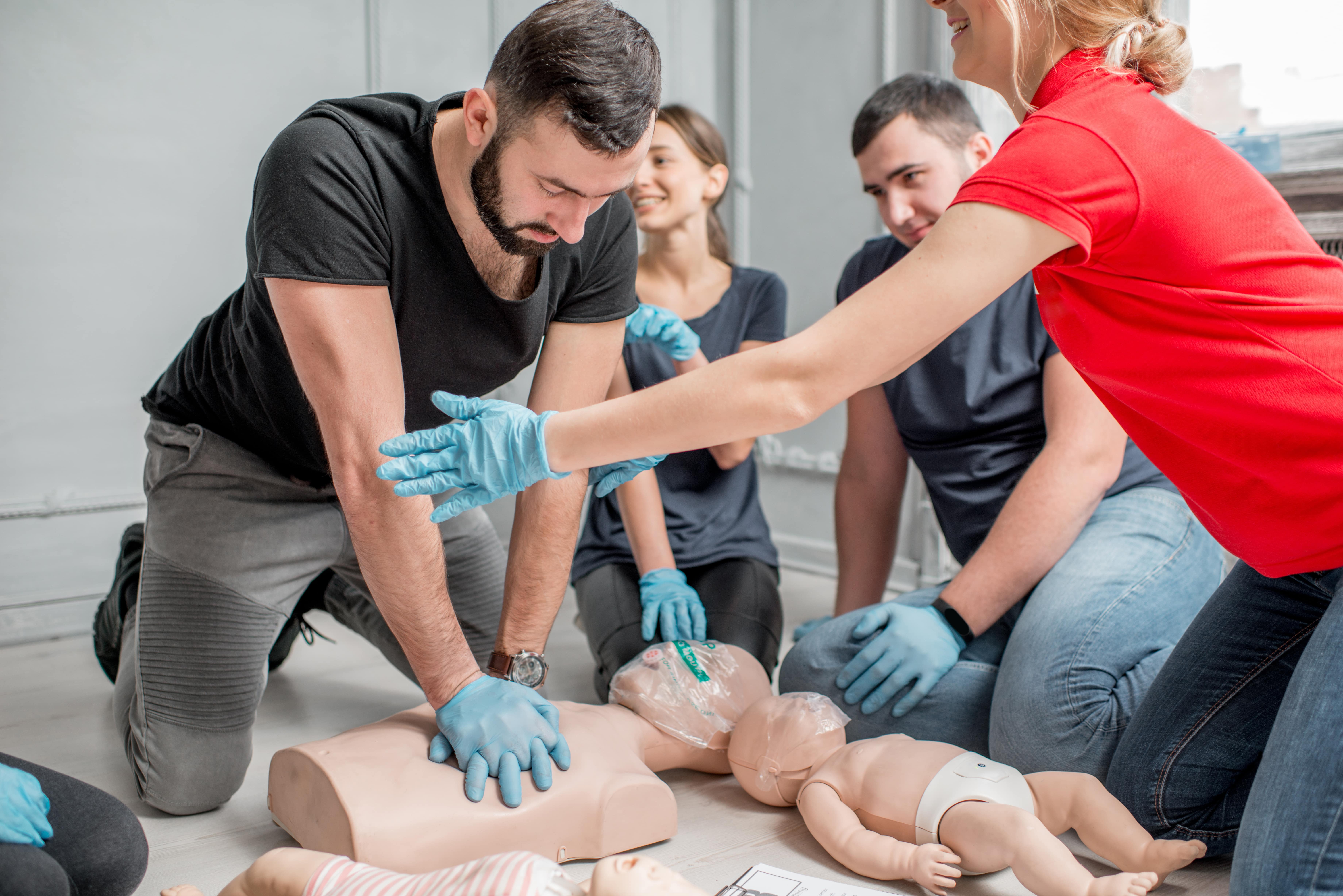Introduction
In our fast-paced world, emergency situations can strike without warning. Whether it's a small injury, a clinical emergency, or a deadly scenario, knowing exactly how to offer first aid can make all the difference. This is where a First Help course enters into play. Lots of people might question what they can gain from such training, and this post intends to clarify that.
By joining in a First Aid and mouth-to-mouth resuscitation course, you do not simply find out about bandaging wounds or carrying out mouth-to-mouth resuscitation; you outfit on your own with invaluable abilities that could save lives. So, just what will you find out in a comprehensive training course? Allow's study the details.
First Help Fundamentals: What You'll Discover in a Thorough Course
Understanding Very first Aid
What is Initial Aid?
First aid describes the preliminary aid provided to someone struggling with an injury or health problem up until professional clinical help shows up. It encompasses various methods and skills varying from basic injury like lifesaving strategies like mouth-to-mouth resuscitation (Cardiopulmonary Resuscitation).

Importance of First Aid Training
Why Must You Take an Emergency Treatment Course?
Taking a First Help course is important for several reasons:
- Confidence: Knowing exactly how to react in emergency situations can instill confidence. Life-Saving Abilities: The capability to do CPR or aid with choking can conserve lives. Career Improvement: Lots of careers call for qualification in very first aid. Community Responsibility: Being trained ways you can aid others effectively.
Overview of CPR
What is CPR?
CPR, or Cardiopulmonary Resuscitation, is an emergency situation treatment performed when a person's heartbeat or breathing has actually quit. It incorporates breast compressions with rescue breaths to keep blood flow and oxygenation till professional aid arrives.
The Structure of a Comprehensive First Aid Course
What Does a First Aid Course Include?
A well-shaped First Aid and CPR course typically covers the adhering to topics:
Introduction to First Aid Legal and Ethical Considerations Scene Safety Basic Life Assistance (BLS) CPR Techniques Choking Relief Wound Care Management Burn Treatment Managing Shock Recognizing Clinical Emergencies Using an Automated External Defibrillator (AED)Legal Aspects of First Aid
Are There Legal Effects Involved in Giving First Aid?
Yes, giving first aid does bring lawful responsibilities referred to as "Do-gooder legislations." These laws secure individuals that aid others in emergency situations, supplied their actions are practical and not reckless.
Scene Safety: The Initial Step
How Do You Make sure Scene Safety?
Ensuring scene safety and security includes examining the setting before coming close to the victim:
- Look for prospective risks (web traffic, fire). Make sure it's secure for both you and the victim.
Basic Life Support (BLS)
What Function Does BLS Play in Emergency Situations?
Basic Life Support includes the basics of preserving life functions until further clinical help gets here. This section covers crucial skills such as:
- Checking responsiveness Activating emergency services Performing top notch upper body compressions
Advanced CPR Techniques
What Are Advanced Techniques Covered in Mouth-to-mouth Resuscitation Courses?
Advanced strategies may consist of:
- Two-rescuer CPR Use of barrier tools for rescue breaths Special factors to consider for infants and children
Choking Relief Techniques
How Do You Aid A Person Who is Choking?
Choking relief involves two important techniques:
The Heimlich maneuver for adults. Back blows and breast thrusts for infants.Wound Care Management
How Do You Effectively Manage Wounds?
Effective wound administration involves:
- Cleaning the injury with saline or tidy water. Applying antibiotic ointment. Covering it with sterile dressings.
Burn Treatment
What Work Approaches for Treating Burns?
Burn therapy varies by level:
Cool the shed under running water. Cover it with non-stick dressings. Seek clinical interest for extreme cases.Managing Shock
How Is Shock Recognized and Treated?
Recognizing shock includes seeking signs and symptoms like pale skin, quick pulse, or confusion:

Recognizing Medical Emergencies
What Sorts of Medical Emergencies Should You Be Aware Of?
Common clinical emergency situations include:
- Heart attacks Stroke Severe allergies Comprehending these conditions assists you act quickly.
Using an Automated External Defibrillator (AED)
How Do You Make use of an AED Correctly?
Using an AED entails transforming it on, connecting pads according to illustrations on the gadget, and adhering to voice prompts carefully.
Importance of Continuous Learning
Why Is Continual Understanding Important in Emergency Treatment Training?

Continuous understanding guarantees you stay upgraded on ideal techniques and new procedures in emergency treatment CPR Course Brisbane care.
FAQs Concerning First Aid Courses
What Is Consisted of in a Standard First Aid Course?- A typical course commonly covers basic life assistance, wound management, choking alleviation techniques, and legal considerations.
- Most training courses range from 6 hours to 16 hours relying on the depth of content covered.
- Yes, upon effective conclusion of the majority of courses, participants get a first help certificate, which is normally valid for two years.
- Yes! Numerous companies supply on-line courses that give versatile learning atmospheres while still being effective.
- Absolutely! Hands-on technique is essential for mastering skills like upper body compressions and utilizing AEDs effectively.
- Generally, there are no age constraints; however, participants need to be mentally skilled to find out these life-saving abilities effectively.
Conclusion
Enrolling in an extensive emergency treatment course outfits individuals with necessary expertise that can save lives during emergency situations-- whether in the house, work, or out in public spaces! From recognizing standard life support treatments such as CPR to finding out just how to handle injuries appropriately or acknowledge indicators of shock-- these courses offer important training that any individual can profit from!
As we browse with our every day lives full of changability-- what far better way than preparing ourselves via understanding gained from structured training sessions focused on conserving lives?
In conclusion-- if you're considering taking up any type of form of first-aid training-- never hesitate! Equip on your own today with these powerful devices since readiness genuinely makes all the difference when every second counts!